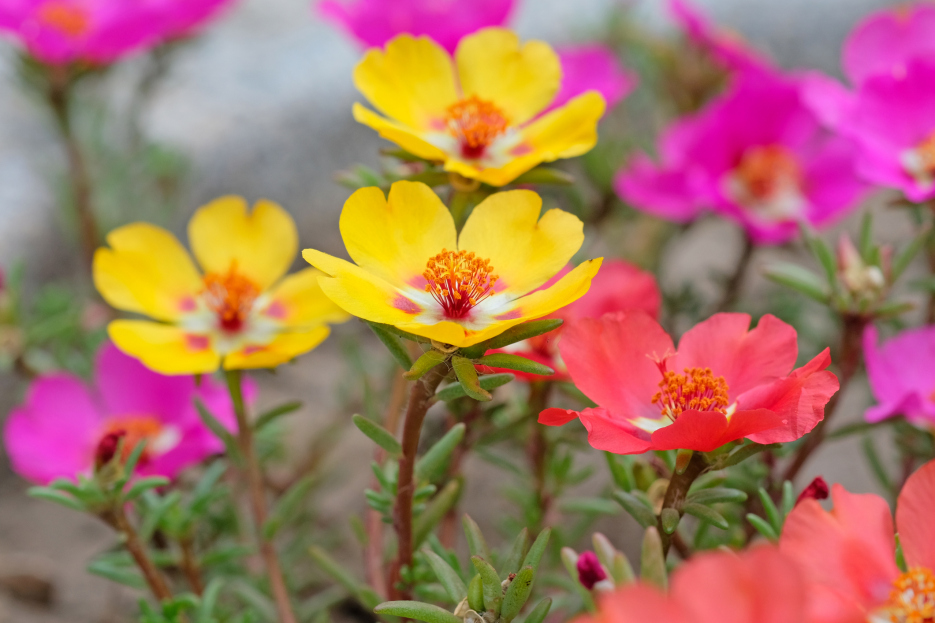
Looking for a heat-tolerant, low-maintenance bloomer that thrives on neglect? Meet Purslane—a vibrant, drought-tolerant groundcover that’s as tough as it is cheerful. With its fleshy, succulent leaves and jewel-toned flowers that pop open in the sun, Purslane (Portulaca oleracea) is a favorite for sunny garden beds, containers, rock gardens, and even edible landscapes.
This fast-growing plant is technically a succulent, often grown as an annual in cooler climates, though it can behave like a perennial in warmer zones. It also happens to be edible—rich in omega-3s and used in salads and stir-fries around the world!
Here’s how to grow and care for this sun-loving superstar:
Purslane loves full sun. It needs at least 6 hours of direct sunlight daily to bloom to its fullest. The more sun, the more flowers! It’s perfect for hot, sunny spots where other plants might struggle.
If planted in too much shade, it will become leggy and stop blooming.
As a succulent, Purslane is extremely drought-tolerant. Water sparingly—only when the soil is completely dry. Once established, it can go days or even weeks without water, especially in humid climates.
Overwatering is the most common mistake. Let the soil dry out fully between waterings to prevent root rot.
Purslane thrives in well-draining, sandy or rocky soil. It doesn’t need rich or nutrient-dense soil and actually prefers poor, dry conditions. If planting in containers, use a cactus or succulent mix for best results.
Avoid heavy or clay-based soils unless well amended with sand or grit to improve drainage.
Purslane doesn’t need much feeding. If you’d like to give it a boost, use a balanced, diluted fertilizer once a month during the growing season—but don’t overdo it. Too much fertilizer will encourage leafy growth at the expense of flowers.
Purslane loves hot, dry weather and performs best in temperatures between 70–100°F (21–37°C). It’s frost-sensitive and should only be planted outdoors after all danger of frost has passed.
In USDA zones 10–11, it may act as a perennial. In cooler zones, it’s grown as a warm-season annual.
Little maintenance is needed! You can pinch back leggy stems to encourage fuller growth or shape the plant. Deadheading is usually unnecessary, as Purslane is self-cleaning, with flowers that naturally close in the evening or on cloudy days and drop off on their own.
Purslane can be propagated easily from cuttings or seeds. Just snip a healthy stem, let it callous over for a day, then stick it into soil—it will root quickly. Seeds can be sown directly into warm soil and will germinate fast in sunny conditions.
Purslane is not just beautiful—it's also edible. The leaves and stems have a slightly lemony, peppery taste and are rich in omega-3 fatty acids. Add to salads, soups, or sautés. Just be sure you’re growing a non-treated, food-safe variety, especially if purchased from a garden center.
While Purslane is safe for human consumption, it is toxic to pets, particularly cats and dogs. It contains soluble calcium oxalates which can cause drooling, vomiting, and other symptoms if ingested. Be sure to plant out of reach of curious pets.